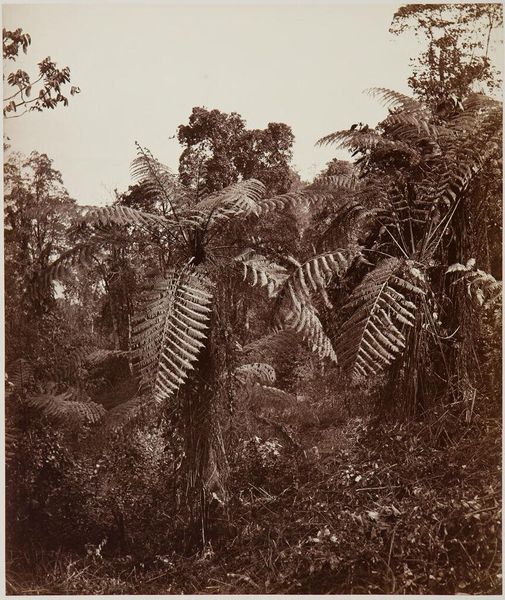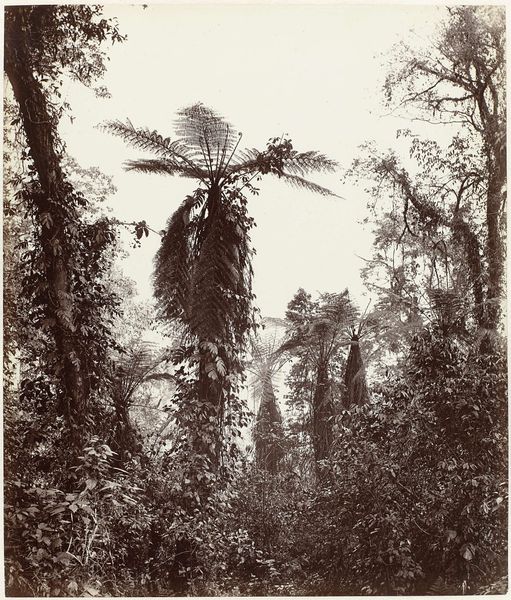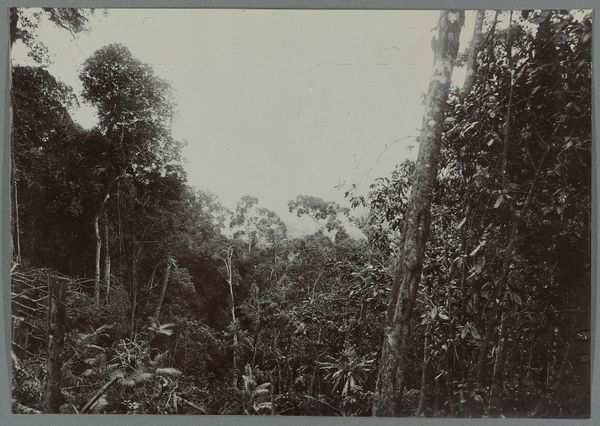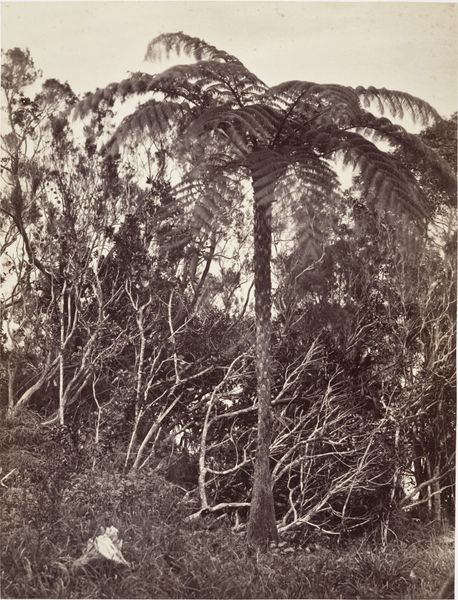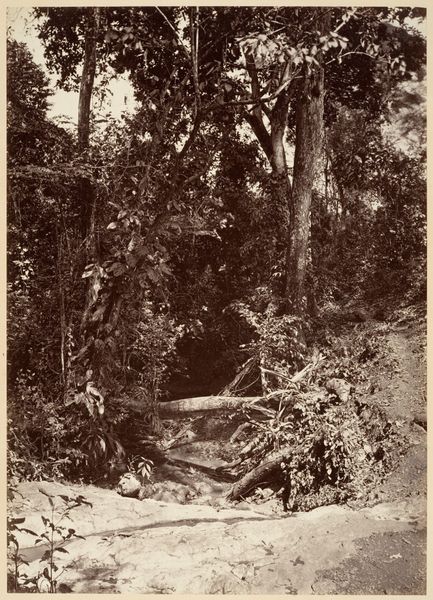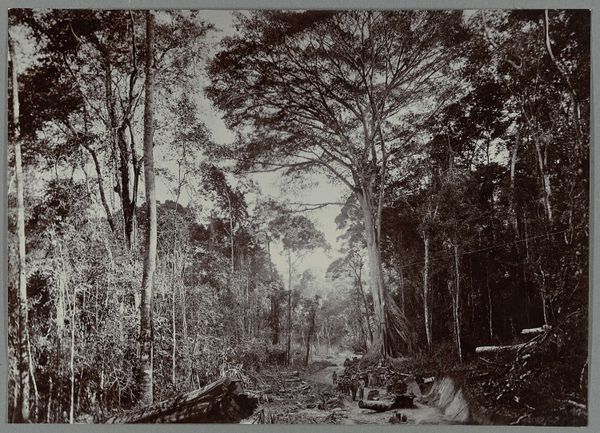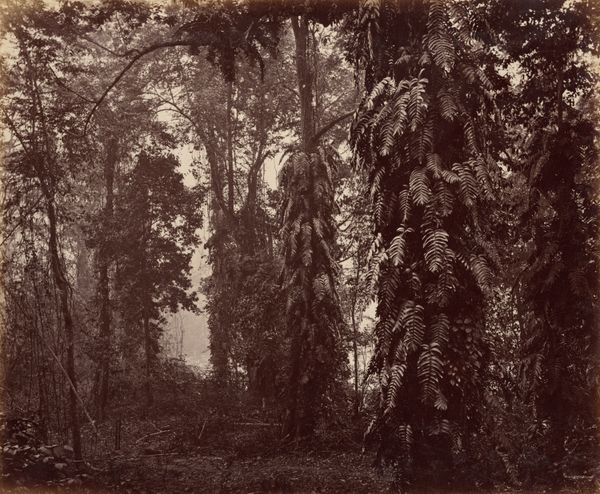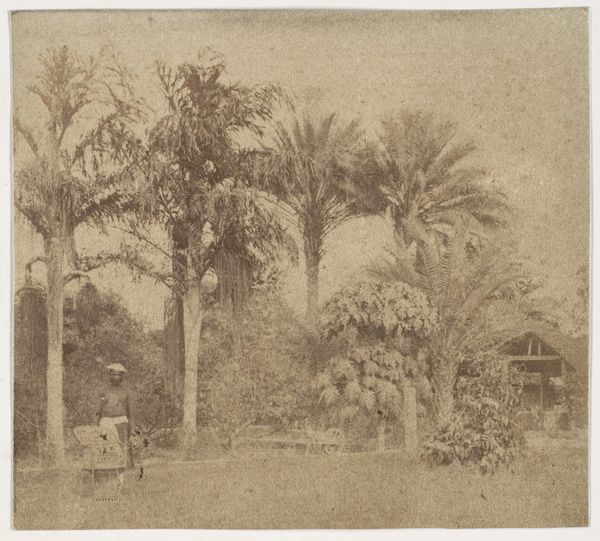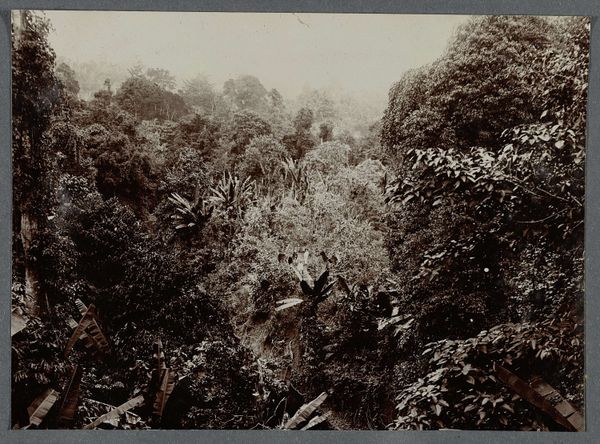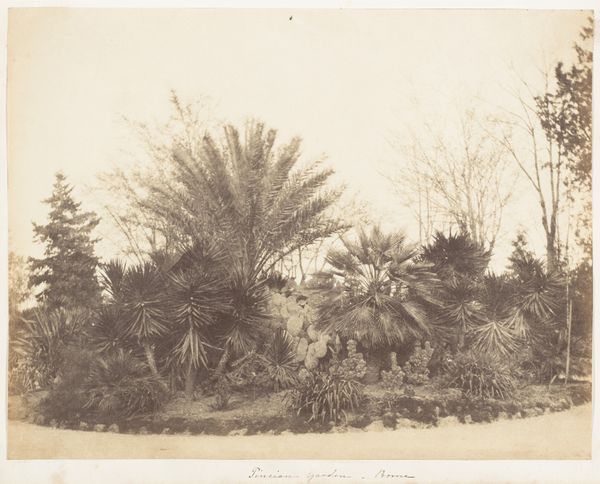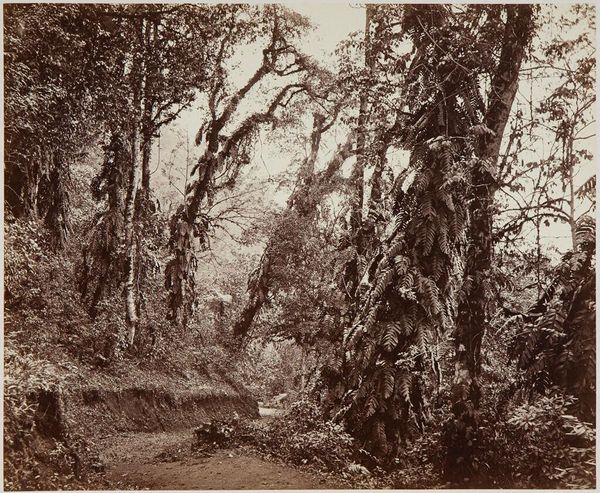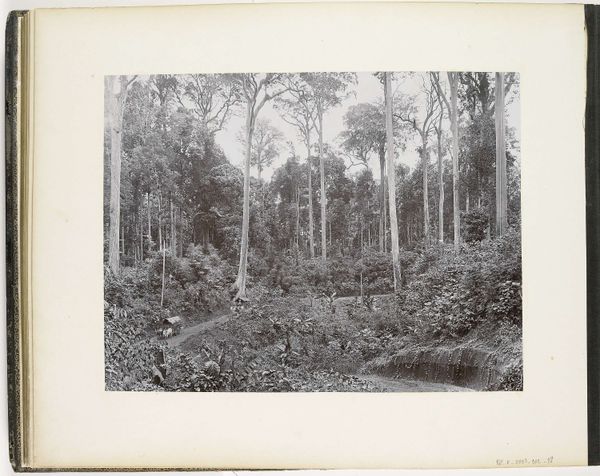
plein-air, photography, gelatin-silver-print
#
tree
#
natural shape and form
#
natural world styling
#
countryside
#
organic shape
#
plein-air
#
nature photography
#
landscape
#
nature colouring
#
nature
#
photography
#
nature friendly
#
orientalism
#
gelatin-silver-print
#
nature heavy
#
nature environment
#
naturalism
Dimensions: height 244 mm, width 299 mm
Copyright: Rijks Museum: Open Domain
Editor: So, this photograph is titled "Tree ferns near Darjeeling, West Bengal, India" by Samuel Bourne, taken around 1868 to 1869. It’s a gelatin silver print. I’m immediately struck by how dense it is, how overwhelming the natural environment feels. What do you see in this piece, Professor? Curator: I see layers upon layers of visual symbols embedded in this dense, almost primordial landscape. Notice how the ferns themselves, particularly in an exotic locale like Darjeeling, were potent symbols of nature's abundance and untamed beauty in the Victorian imagination. Editor: That's a good point. So the choice of location is significant then? Curator: Absolutely. Bourne wasn’t simply documenting a place, he was curating a vision of the exotic East for a Western audience hungry for the romance of the unknown. These ferns speak of fecundity, mystery, and the sheer power of nature. What emotional impact do you think that might have on viewers then? Editor: Perhaps awe, and maybe even a little bit of anxiety? Like, nature's a force, a powerful, possibly threatening one. Curator: Precisely. The dense composition mirrors this, almost trapping the eye within its depths. And think about the very act of photographing this scene – a deliberate attempt to capture and possess a piece of this ‘other’ world. How does this colonial context shift the meaning, in your opinion? Editor: It feels like more than just a landscape picture. It feels… loaded. Now, thinking about what we discussed, the density and choice of place point towards control and power of the image maker on the viewers as a means of establishing colonial authority. It all clicks. Curator: It does, doesn’t it? Understanding these symbolic layers enriches our viewing experience, reminding us that images always carry cultural and psychological weight far beyond what's immediately visible. I think my eye for symbolic sight will certainly sharpen from here on out. Editor: Definitely! Thank you.
Comments
No comments
Be the first to comment and join the conversation on the ultimate creative platform.

